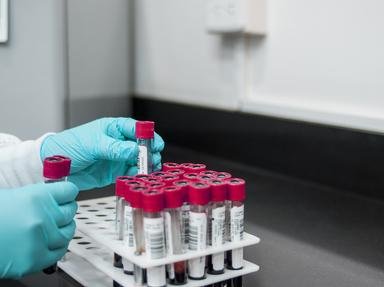Quiz Answer Key and Fun Facts
1. The fullerenes discovered in 1985 by Robert Curl, Harold Kroto, and Richard Smalley were composed only of the element carbon, but the arrangement of carbon-carbon bonds was something that had never before been seen. What name is given to this phenomenon, in which a single element can exist in several structural forms?
2. Aside from amorphous carbon, carbon has three structural forms, including the recently-discovered carbon nanotubes. Which more common compounds represent the other two major structures of carbon?
3. The scientists that made the discovery in 1985 called the carbon tubes that they discovered "fullerenes," an eponym derived from Richard Buckminster Fuller. In what non-chemistry-related field did Fuller make a name for himself?
4. The first fullerenes to be discovered were found inside of the laboratory, but they exist in trace amounts in nature as well. Where might you find buckyballs in your house?
5. C60 molecules are very stable. Which of the following best describes their reactivity and solubility?
6. One very cool property of fullerenes, specifically buckminsterfullerenes, is that they aren't always hollow. In 2001, scientists who found noble gases trapped inside buckyballs were able to make which conclusion surrounding the Earth's past?
7. In 1991, scientists showed that fullerenes behave strangely at 18 Kelvin. Which behavior, which other compounds require lower temperatures in order to exhibit, do they show?
8. A hypothesized use for carbon nanotubes is to surround them with cellulose paper so that they act as electrodes and conduct electricity. For what could the cellulose/fullerene combination be used?
9. Carbon nanotubes might be used to create strong and thin cables necessary for the development of a technology found most often in science fiction. What could they be used for?
10. Buckyballs act as effective industrial lubricants. They are useful for catalyzing chemical reactions. They even absorb free radicals in the brain, effective for preventing neuron damage after a stroke. However, perhaps the most surprising application is the use of fullerenes in which everyday business item?
Source: Author
adams627
This quiz was reviewed by FunTrivia editor
crisw before going online.
Any errors found in FunTrivia content are routinely corrected through our feedback system.

